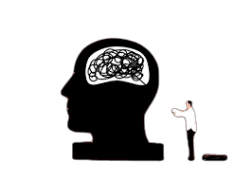Introduction – Understanding Disruptive Mood Dysregulation Disorder in Children
Childhood is meant to be filled with curiosity, laughter, and learning. Yet for some children, emotions can feel unpredictable, overwhelming, and explosive. When anger and irritability become a daily struggle — far beyond typical tantrums — parents often begin to worry something deeper may be happening.

Disruptive Mood Dysregulation Disorder (DMDD) is a relatively new diagnosis introduced in the DSM-5 (Diagnostic and Statistical Manual of Mental Disorders, Fifth Edition) to describe children who experience severe, chronic irritability and frequent temper outbursts.
Before DMDD was recognized, many of these children were mistakenly diagnosed with bipolar disorder — a label that didn’t quite fit because they didn’t experience the clear manic and depressive cycles typical of bipolar illness. DMDD was created to better explain ongoing irritability and emotional dysregulation that disrupts a child’s life at home, in school, and with peers.
This article explores DMDD in depth — its symptoms, causes, differences from bipolar disorder, and most importantly, how understanding it can help children feel seen, supported, and capable of emotional healing.
What Are the Symptoms of DMDD in Children?
Every child experiences frustration. But for children with DMDD, their reactions to everyday challenges are much more intense and frequent than what’s expected for their age.
According to DSM-5 diagnostic criteria, DMDD involves two main symptom patterns: severe temper outbursts and persistent irritability or anger between those outbursts. These behaviors are not occasional — they are chronic and impairing, lasting for a year or more.
1. Severe Temper Outbursts
Children with DMDD often have verbal or physical outbursts that are extreme compared to the situation. For example:
- Screaming uncontrollably over small frustrations
- Physical aggression toward objects or people
- Harsh or explosive language
These outbursts occur on average three or more times per week, across multiple settings — home, school, or social activities.
2. Persistent Irritable or Angry Mood
Between tantrums, children remain chronically irritable, angry, or easily frustrated. It’s not just during an outburst — their mood baseline is consistently negative. Parents often describe them as “always on edge” or “never happy.”
3. Duration and Consistency
For a diagnosis, these symptoms must:
- Persist for 12 months or more without a break of over three months.
- Appear in at least two settings (e.g., home and school).
- Begin before age 10, though diagnosis is typically made between ages 6 and 18.
4. Impairment in Functioning
Children with DMDD often struggle socially and academically. They may:
- Have difficulty making or keeping friends
- Be frequently disciplined at school
- Experience family conflict or rejection from peers
- Show declining self-esteem
These symptoms cause real suffering — not only for the child but for everyone involved.
What Are the Symptoms of Dysregulation in Children?
While DMDD focuses on chronic irritability, emotional dysregulation is a broader concept describing difficulty managing emotions appropriately. It’s not limited to anger — it can include sadness, anxiety, and impulsivity as well.
1. Emotional Overreaction
Children with dysregulation react to minor frustrations as if they were major crises. For instance:
- A small mistake on homework may lead to tears or shouting.
- Being told “no” may cause an hour-long meltdown.
These emotional reactions are intense and last longer than expected.
2. Difficulty Calming Down
After emotional outbursts, it takes a long time for the child to return to a calm state. Their emotional “brakes” don’t work effectively. Parents often feel like they’re “walking on eggshells,” unsure what might trigger the next storm.
3. Impulsivity and Aggression
When emotions spike, children may act without thinking — yelling, hitting, or breaking things. These actions aren’t intentional misbehavior but signals of underdeveloped emotional regulation skills.
4. Internal Distress
Even when calm on the outside, many children feel shame, confusion, or guilt after an outburst. They may express sadness about “being bad” or fear that others dislike them, showing that their dysregulation causes real inner turmoil.
5. Social and Academic Challenges
Because their reactions are unpredictable, children with dysregulation may struggle with:
- Peer relationships (others may avoid them)
- Teacher misunderstandings (viewed as defiant rather than overwhelmed)
- Low motivation due to frequent punishment or shame
Recognizing emotional dysregulation as a symptom of distress, not disobedience, allows parents and teachers to approach these children with empathy rather than frustration.
What Is the Difference Between DMDD and Bipolar in Children?
DMDD and pediatric bipolar disorder can appear similar on the surface — both involve mood changes and irritability — but the pattern and duration of symptoms differ significantly. Understanding these differences prevents misdiagnosis and ensures the right treatment path.
1. Mood Pattern
- DMDD: Chronic irritability and frequent temper outbursts; mood is persistently negative.
- Bipolar Disorder: Mood fluctuates between distinct episodes of mania/hypomania (elevated mood, high energy, risky behavior) and depression (sadness, hopelessness, fatigue).
Children with DMDD don’t experience these clear “up” and “down” cycles — their irritability is constant, not episodic.
2. Duration and Stability
- In DMDD, symptoms are consistent throughout the day and last for years.
- In bipolar disorder, manic or depressive episodes are episodic, lasting days to weeks, with periods of normal mood in between.
3. Age of Onset
DMDD symptoms typically appear in early childhood (by age 6), while bipolar disorder often emerges later — during adolescence or adulthood.
4. Emotional Quality
Children with bipolar disorder experience euphoric or grandiose moods during manic phases — feeling invincible, hyperactive, or overly confident. In contrast, children with DMDD rarely feel happy or energized; their mood remains irritable or angry most of the time.
5. Treatment Approach
- DMDD: Focuses on emotion regulation through therapy (CBT, DBT) and parent training.
- Bipolar Disorder: Often requires mood-stabilizing medication and long-term psychiatric management.
Recognizing these differences helps avoid unnecessary medication and ensures children receive the most effective emotional support.
What Are the Causes of Disruptive Mood Dysregulation Disorder?
Like most psychological conditions, DMDD doesn’t have a single cause — it develops through a complex mix of biological, psychological, and environmental factors. Understanding these causes helps parents approach the disorder with compassion rather than blame.
1. Neurobiological Factors
Research shows that children with DMDD may have differences in brain regions that control emotional processing — especially the amygdala and prefrontal cortex. These areas manage impulse control, emotion recognition, and response regulation.
When these circuits are underactive or poorly connected, emotions can escalate faster and last longer than they should.
2. Genetic Vulnerability
A family history of mood disorders, anxiety, or ADHD increases the likelihood of DMDD. This doesn’t mean the condition is inherited directly, but genetics may influence how a child’s brain responds to stress and frustration.
3. Early Childhood Experiences
Children exposed to chronic stress, inconsistent parenting, or trauma are more likely to develop mood dysregulation. Early experiences of instability can affect how a child learns to manage emotions and trust caregivers.
4. Temperament
Some children are naturally more emotionally reactive. A sensitive temperament combined with environmental stress can lead to chronic irritability and difficulty recovering from anger.
5. Family Dynamics and Environment
- High-conflict homes or inconsistent discipline can worsen emotional instability.
- Parental mental health issues (like depression or anxiety) may influence a child’s ability to regulate emotions.
- Academic or peer stress can trigger frequent frustration and behavioral problems.
It’s important to note: parents do not “cause” DMDD — but supportive family dynamics play a major role in reducing symptom severity and promoting emotional growth.
Diagnosis and Early Intervention
Diagnosing DMDD requires a careful, multi-step process by mental health professionals. Because symptoms overlap with ADHD, oppositional defiant disorder (ODD), and anxiety disorders, accurate assessment is crucial.
1. Clinical Evaluation
Psychologists and psychiatrists use structured interviews, behavioral observations, and standardized rating scales. They gather input from parents, teachers, and sometimes the child.
2. DSM-5 Criteria
To be diagnosed with DMDD, a child must:
- Have severe recurrent temper outbursts three or more times per week
- Display a chronically irritable mood between outbursts
- Show symptoms for at least 12 months
- Begin showing signs before age 10
- Exhibit impairment in multiple settings
3. Differential Diagnosis
Professionals must rule out:
- Bipolar disorder (episodic mood swings)
- ADHD (attention and hyperactivity issues)
- Oppositional Defiant Disorder (defiance without persistent mood symptoms)
- Autism Spectrum Disorder (emotional outbursts tied to sensory or communication challenges)
Early identification allows children to receive emotional skills training and therapy before symptoms worsen.
Treatment and Management Strategies
Managing DMDD requires patience, structure, and consistent care. There is no one-size-fits-all treatment, but combining therapy, family support, and lifestyle adjustments can significantly improve emotional regulation.
1. Psychotherapy
- Cognitive Behavioral Therapy (CBT): Helps children recognize triggers and develop healthier thinking patterns to reduce irritability.
- Dialectical Behavior Therapy for Children (DBT-C): Focuses on mindfulness, distress tolerance, and emotional control.
- Parent Management Training (PMT): Teaches parents consistent strategies to handle outbursts calmly, reinforce positive behavior, and reduce conflict.
2. Family Therapy
Family dynamics play a major role in emotional regulation. Therapy sessions help families improve communication, understand emotional triggers, and create supportive home routines.
3. School Collaboration
Teachers can implement classroom strategies to reduce frustration — such as predictable routines, calm communication, and break times for emotional reset.
4. Medication (When Needed)
Medication isn’t always necessary but may be prescribed when symptoms are severe or accompanied by anxiety, ADHD, or depression. Options may include SSRIs (for mood) or stimulants (for attention). Medication should always be monitored by a child psychiatrist.
5. Emotional Coaching at Home
Parents can support children by:
- Staying calm during outbursts
- Validating feelings (“I can see you’re angry, and that’s okay, but we can handle it safely”)
- Setting consistent expectations and boundaries
- Praising emotional regulation efforts
Consistency teaches children that emotions can be felt without losing control.
Helping Children Thrive Despite DMDD
A DMDD diagnosis can feel overwhelming at first, but it’s not a life sentence. With compassion, structure, and professional help, children can learn to manage emotions and build healthy relationships.
Building Emotional Intelligence
Teaching children to name emotions — anger, frustration, disappointment — gives them control. Over time, emotional vocabulary helps reduce reactive behavior.
Routine and Predictability
Structured daily routines lower stress by reducing surprises. Knowing what to expect helps children feel safe and in control.
Positive Reinforcement
Celebrating small victories, like handling frustration calmly or apologizing after an outburst, builds confidence and motivation.
Parental Self-Care
Caring for a child with DMDD can be emotionally exhausting. Parents benefit from therapy, support groups, or mindfulness practices to recharge their patience and compassion.
With time, many children outgrow the most severe symptoms of DMDD — especially when supported early.
Conclusion – Understanding and Supporting Emotionally Struggling Children
Disruptive Mood Dysregulation Disorder represents more than just “bad behavior.” It’s a condition that reflects real difficulties in emotional control, often rooted in brain development, temperament, and environment.
Children with DMDD are not defiant by choice — they are struggling to manage emotions that feel too big for them to handle. Recognizing this transforms frustration into understanding and punishment into guidance.
Early diagnosis, therapy, consistent routines, and a compassionate home environment can change the course of a child’s life. With the right tools, children can learn to express feelings safely, connect meaningfully, and grow into emotionally resilient adults.
DMDD is not a child’s fault — and it is not hopeless. With empathy, structure, and professional care, healing is possible.



